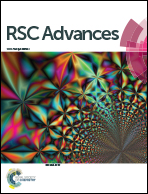Naturally occurring tetramic acid products: isolation, structure elucidation and biological activity
Abstract
Natural products containing the tetramic acid core scaffold have been isolated from an assortment of terrestrial and marine species and often display wide ranging and potent biological activities including antibacterial, antiviral and antitumoral activities. Owing to their intriguing structure and biological activity, tetramic acid-containing agents, both natural and synthetic, are attracting increasingly significant attention from biologists and chemists. Indeed, this increasing enthusiasm has led to significant advances. The goal of this review is to present not only these advances but also the broader context that frames them and provides a complete view of the naturally occurring tetramic acids inclusive of studies aimed at isolation, structure elucidation, and evaluation of biological activities. Consistent with advances over the past decade this review covers the period spanning 2002 to 2013.


 Please wait while we load your content...
Please wait while we load your content...